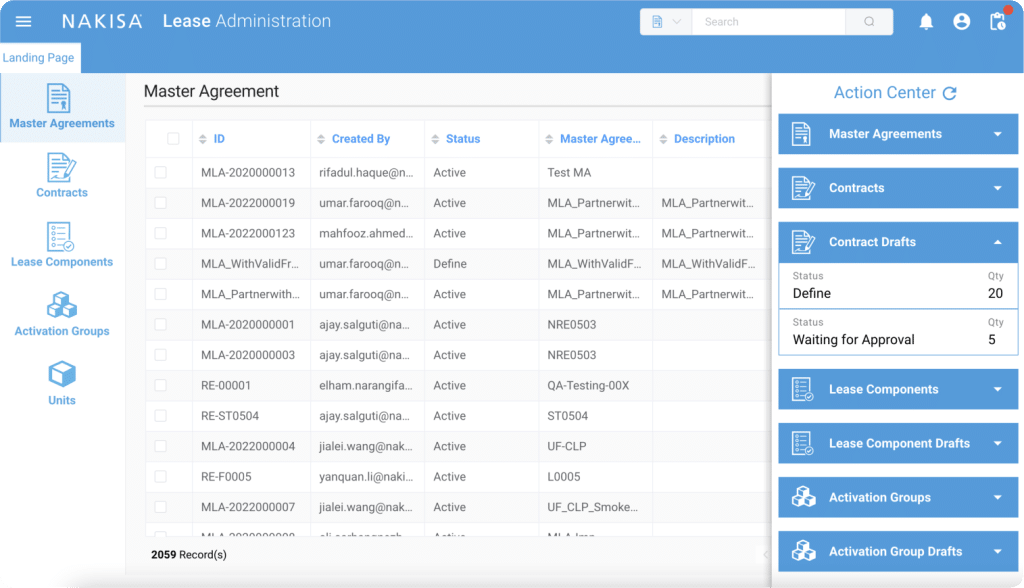What is HR data quality?
HR data quality refers to the accuracy, completeness, and relevance of the data stored and managed within a company's human resources systems. It encompasses the integrity of information related to employees, their roles, performance, compensation, as well as other critical HR metrics such as DE&I and turnover analysis.
According to Gartner's ABCD Framework, HR data quality encompasses four key dimensions: Accuracy, Breadth, Consistency, and Depth. Let’s explore each of these:
| Data dimension | What it covers |
| Accuracy | Is every detail of the data correct? Can we trust this data? Why or why not? |
| Breadth | How complete is the data? Is there anything missing? |
| Consistency | Has the standard been applied? Any anomalies in data gathering methodologies, processes or format? |
| Depth | Is the data granular enough? |
Accuracy
HR data must be error-free, up-to-date, and centralized across all data sources. HR teams assess data accuracy by evaluating whether the team can trust this data and identifying reasons for any doubts. Crucial steps include identifying errors, synchronizing data across systems, and archiving outdated information. Building trust in HR data requires eliminating sources of errors to maximize its utility and reliability.
Breadth
Data breadth represents data completeness and representativeness. It’s essential for HR professionals to assess whether the data comprehensively represents the organization's employees and identify any gap. Encouraging employees to contribute additional data points and leveraging predictive modeling techniques can enhance data breadth, providing deeper insights into workforce dynamics.
Consistency
HR professionals should establish and consistently adhere to uniform data formats and collection methodologies across the enterprise. Assessing consistency involves examining whether methods have changed over time and identifying any time gaps without data. HR teams should ask themselves: Has the standard been consistently applied? Are there any anomalies or issues in the data format? Standardizing data definitions and formats streamlines data management processes, enabling more effective analysis.
Depth
HR data analysis must delve into granular details to provide targeted insights into workforce management and planning. HR teams must ensure they have all necessary HR data and that it’s granular enough to measure, target, and analyze the workforce at both the business unit and individual levels.
Data quality vs. data integrity vs. data governance: What is the difference?
When exploring data quality, you can also come across the terms “data integrity” and “data governance”. Let’s clarify them as well. Data integrity ensures that data remains accurate, consistent, and trustworthy throughout its lifecycle, preventing accidental or intentional alterations or corruption. Techniques such as data encryption, access controls, and audit trails are employed to maintain data integrity and prevent unauthorized modifications or deletions.
On the other hand, data governance is a framework of policies, procedures, and processes that oversee how organizations manage, protect, and utilize their data assets. It provides guidelines and structures for ensuring data quality, integrity, security, compliance, and accessibility, aligning data management practices with organizational objectives and regulatory requirements.
What are the effects of poor data quality on the typical enterprise?
The insights derived from an organization's HR analytics are only as valuable as the data itself. The commonly heard adage "garbage in, garbage out" succinctly captures this concept: if poor-quality data is input into systems, the resulting outputs will also be compromised. Unfortunately, many companies only become aware of HR data quality issues when business and HR users are already confronted with accumulated errors. Such oversights can significantly impair leaders' ability to make strategic decisions for their organizations, ultimately impacting the bottom line.
Let's examine the significance of HR data quality by exploring statistics:

Source 1: Gartner report from 2021.
Source 2: Gartner report from 2018.
Source 3: Statista.
Source 4: Harvard Business Review.
Here are four critical impacts organizations may face when their HR data falls short of the mark:
- Wrong strategic decisions: C-level executives may make decisions about large-scale workforce restructuring, opening new branches, or pursuing mergers or acquisitions without accurate data backing. Despite optimism, this can lead to unforeseen challenges in employee morale, skill gaps, and cultural alignment, resulting in resistance, delays, and failed outcomes.
- Loss of confidence in system use: Poor data quality can lead to a loss of confidence in the use of systems, resulting in inefficient utilization or even abandonment of solutions that could automate processes and save resources.
- Legal implications and financial consequences: Breaching legal commitments, such as failing to meet gender equality reporting requirements, can result in significant financial penalties. For example, in France, breaching the Gender Equality Index can lead to fines of up to 1% of the organization's annual payroll bill.
- HR staff work duplication and attrition: Approximately 80% of the overall analysis process is spent on cleaning or preparing data, leaving only 20% for actual analysis. This inefficiency can lead to duplication of work, increased rework, and higher staff attrition rates.
For more insights on HR data quality importance, watch the video from Nakisa's expert Sherif Luka.

What are the reasons for poor HR data quality?
According to our 20-year experience in the field, the most common challenges for maintaining HR data quality include data silos, outdated HR technologies, manual data entry and inefficient change management processes.
Data silos
Global companies often rely on multiple HR systems in various countries, and those lack integration and data centralization. This results in information being scattered across various systems and departments, leading to fragmentation and impeding efforts to integrate data. Without a centralized approach to data management, organizations face difficulties in ensuring consistency and accuracy across their HR datasets.
Outdated HR technologies
Not only do the legacy HR systems lack integration and scalability to support large enterprises’ needs, but they also have no visibility into missing or incorrect data. HR teams just don’t know about data quality issues until they got accumulated with time and become too evident. As a result, HR professionals lose trust in the systems they use and turn to simple tools, for example Excel or PowerPoint. While these tools may provide temporary relief, they lack the capabilities to effectively handle the complexities of modern HR data requirements and can only be functional if a lot of manual work is involved.
Manual data entry
Manual data entry is another reason why so many companies have poor HR data. Manual methods are both time-consuming and error-prone, leading to data quality degradation over time: typos, data entered in the wrong field, missed entries, duplicated entries, and conflicting or mismatched entries are all possible scenarios. During large transformations, manual data entry and changes can be extremely inefficient.
Inefficient change management processes
During strategic organizational changes, enterprises often face inefficient change management processes, resulting in numerous iterations between stakeholders, delays in implementing organizational changes, and poor data quality.
As we can see, there are many reasons for poor data quality. Let’s see how to address them in our next section.
To efficiently address data quality challenges, it’s important to leverage powerful technology. The market offers numerous tools for companies of various sizes and needs. If you’re struggling to find the perfect fit, check out our Buyer’s Guide with RFP scorecard for guidance.
How to ensure the quality of HR data? 5 actionable steps
While many companies struggle to maintain high data quality, there are best practices that can help achieve it. Here are the five steps that Nakisa experts consider the most crucial:
1. Centralize and synchronize HR data across various source
In today's complex business environment, companies often operate with multiple HR platforms and data sources. This fragmentation poses risks to HR data quality due to various challenges like data discrepancies, manual errors, and difficulties in maintaining consistency.
To address these challenges, leverage modern HR software which allows organizations to seamlessly integrate data from various sources, including ERPs like SAP HCM, SAP SuccessFactors, and Workday. This integration not only eliminates offline processes but also ensures data accuracy and reliability at any time. For instance, Nakisa HR Suite identifies data discrepancies and offers write-back capabilities for automatic data updates, reducing the burden on HR teams and bolstering data maintenance across the organization. These automatic updates follow a set of customized rules established by your organization to ensure that only desired and approved changes are recorded.
2. Review HR processes and define standardized approaches for the whole company
During the review of HR processes and the implementation of standardized approaches, it’s important to define what HR data to gather, its format, frequency of updates, and validation procedures. Here, once again, modern HR software is indispensable for automating processes, fostering consistency across the organization, and minimizing errors.
For instance, with Nakisa HR Suite, companies can configure company-wide workflows and processes. This includes defining mandatory fields to ensure data completeness and using standardized data formats for data consistency. Also, teams can establish rules and guiding principles within the Nakisa HR Suite environment, ensuring adherence to company standards, policies, and regulations.
Implementing unified approaches and configuring rules using HR software not only streamlines processes but also enhances data accuracy and compliance, ultimately contributing to the efficiency and effectiveness of HR operations.
3. Leverage real-time HR analytics that provides insights into HR data quality
As we've discussed the principle of “garbage in, garbage out,” it's clear that ensuring the quality of HR data is crucial. Beyond analyzing org charts for various HR metrics, you need to assess the “health” of your HR data to determine its reliability. Nakisa HR Suite offers a solution by providing real-time HR analytics, including a Data Quality Index. This index demonstrates adherence to the validation rules established by your company and tracks the data's health over time, allowing you to monitor whether the data quality is improving or worsening.
4. Use a collaborative (yet role-based!) HR tool to streamline decision-making on organizational transformations
Suggesting a change in organizational structure shouldn’t require days and weeks of iterations and back-and-forth discussions. There’s no need to create endless org charts in PowerPoint when team managers, HR professionals, C-level executives, and finance teams can collaborate in a single platform. An excellent example is Nakisa’s Organizational design software, which empowers line managers to suggest agile changes to their organizational structures while remaining aligned with the company’s strategic vision. Nakisa restricts each collaborator's access to only the part of the organizational structure relevant to their role and allows them to perform actions that align with their responsibilities.
5. Ensure data privacy and security to prevent unauthorized changes.
When looking for HR software, make sure it prioritizes robust data privacy and security measures, including granular access permissions, data encryption, and audit logs. These measures are essential for preventing unauthorized changes and maintaining the integrity of organizational data. We, at Nakisa, take data privacy and security very seriously. You can find more about it on our Security page.
How to improve your HR data quality with Nakisa HR Suite?
If you are looking for an enterprise-grade HR solution with stringent standards for HR quality, consider Nakisa HR Suite. As a leading cloud-native solution for HR teams, Nakisa HR Suite facilitates workforce planning, aiding both strategic organizational design transformation and operational day-to-day changes in organizational structure. Thanks to decades of experience with Fortune 1000 clients, Nakisa offers a comprehensive HR analytics and visualization engine that can be easily configured to your specific business requirements.
Nakisa HR Suite encompasses numerous features to ensure high HR data quality, such as real-time data synchronization, write-back capabilities (and even mock write-back for data validation!), robust business rules, intelligent notification of data discrepancies, advanced reporting for issue identification, and many more.
Have a no-obligation call with our experts to get more details or learn more about the Nakisa HR Suite’s various products.







